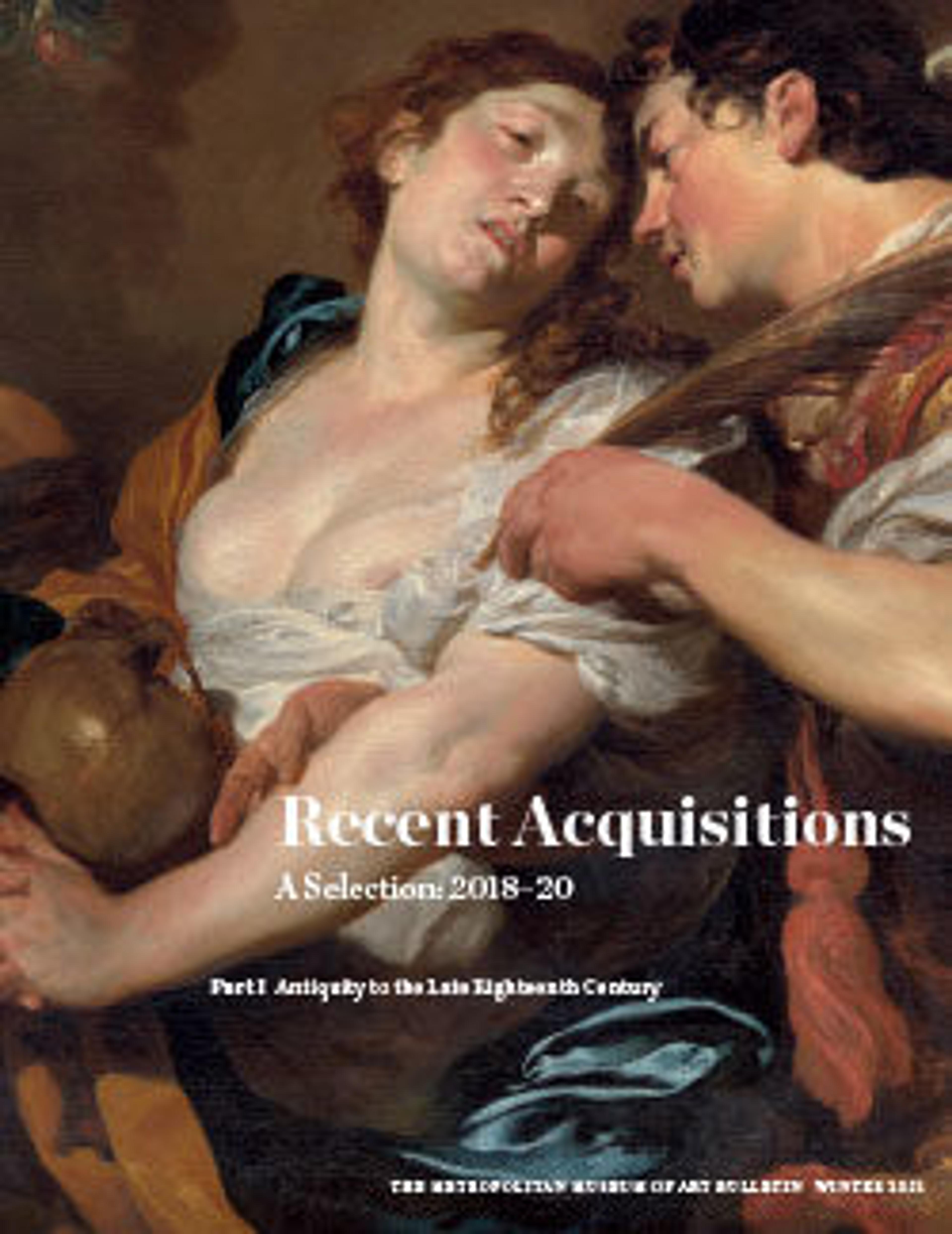Study of a Seated Mannequin with an Arrangement of Drapery, for a Figure of the Virgin
This sheet by a northern Italian draftsman is an extremely rare, early example of a drapery design made with the use of a mannequin, as indicated by the figure’s simplified anatomy, rigid disposition, and clumped hands. In the fifteenth century, the sculptor and theorist Filarete advised artists seeking to render draperies in a natural way to take a small wooden figure with jointed limbs and dress it in real cloth, as if it were a living person. He added that if the linen did not fall as desired, it could be wetted with melted glue and allowed to harden. As this practice became widespread, artists also used clay slip to set the fabric in place. In the present drawing, the ample folds of cloth, built up in layers of black chalk, ink, wash, and white gouache, bear a sculptural heft. The inscription "Ave vergine" (Hail Virgin) reveals that the study was intended for a figure of the Virgin Mary in a scene of the Annunciation.
Artwork Details
- Title: Study of a Seated Mannequin with an Arrangement of Drapery, for a Figure of the Virgin
- Artist: Anonymous, North-Italian, probably Lombard, 15th century
- Date: 15th century
- Medium: Pen with two colors of brown ink and wash (warm brown and grayish), highlighted with white gouache, over grayish black chalk, on gray-blue paper
- Dimensions: Sheet: 8 1/8 × 5 1/4 in. (20.6 × 13.3 cm)
- Classification: Drawings
- Credit Line: Harry G. Sperling Fund, 2020
- Object Number: 2020.165
- Curatorial Department: Drawings and Prints
More Artwork
Research Resources
The Met provides unparalleled resources for research and welcomes an international community of students and scholars. The Met's Open Access API is where creators and researchers can connect to the The Met collection. Open Access data and public domain images are available for unrestricted commercial and noncommercial use without permission or fee.
To request images under copyright and other restrictions, please use this Image Request form.
Feedback
We continue to research and examine historical and cultural context for objects in The Met collection. If you have comments or questions about this object record, please contact us using the form below. The Museum looks forward to receiving your comments.
